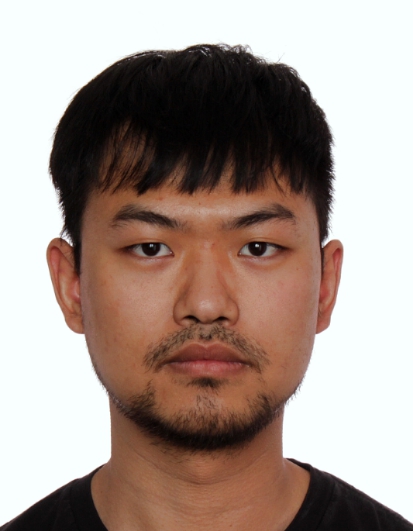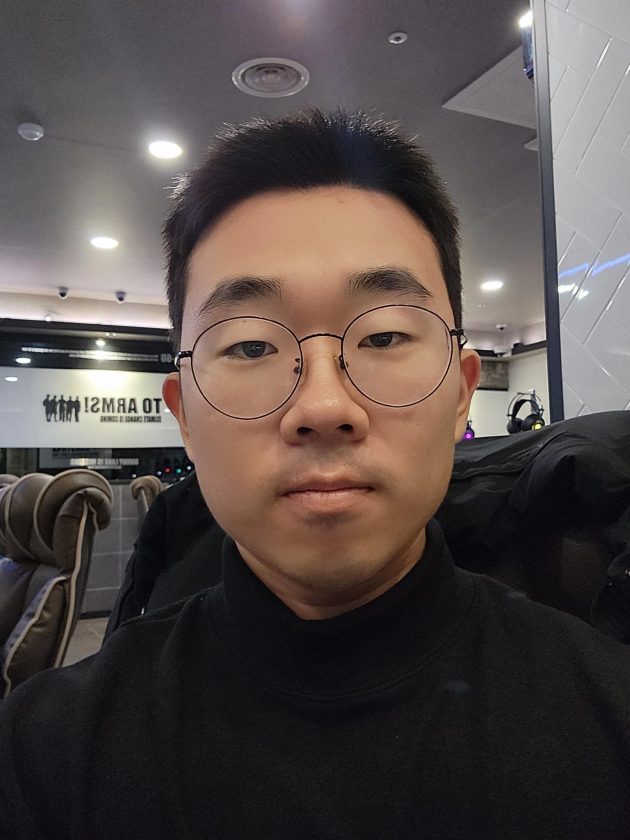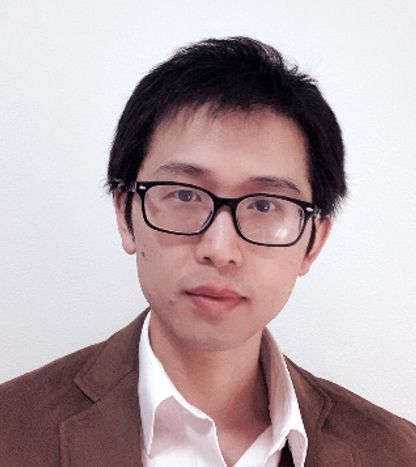
Dr. Kai Wang is PhD, Principal Investigator, and Assistant Research Professor at the Department of Materials Science and Engineering, Penn State.
His recent work on intelligent and efficient panchromatic imaging for artificial retina biotechnology, caught our attention and so we tried to touch base with him for an interview. We got lucky, as he agreed to spend some time with us.
Dr. Wang, here, talks about his quest to understand the mechanisms of cognition within the neural topological structures of the brain. And how these natural intelligences can be influenced using artificial materials and devices.
As we usher in the era of AI, he believes that we must also give equal consideration to the concept of “human upgrading.”
Scroll down to know more about his ideas and research 🙂
What initially sparked your interest in materials science, and what motivated you to pursue it as a career?
My fascination with science, including material science, which ultimately steered me toward a career in research, has its roots in my childhood curiosity about the world. During that time, I constantly posed questions to my parents and grandparents, persisting until their knowledge was exhausted. Fortunately, they were always patient and nurturing in their responses.
As I entered school, I found a broader pool of resources to satiate my curiosity: textbooks, classes, and even later, the internet. The process of uncovering the mechanisms that governed the phenomena I observed was a thrill that significantly shaped my growth during my youth.
Upon entering college, my studies in the history of physics and material science further expanded my knowledge base, simultaneously unveiling a myriad of new questions within my major.
The quest to decipher these enigmas in a concrete, scientific manner has always brought me immense satisfaction. This unending journey of exploring the unknown is what continues to motivate me to pursue a career in research.
Would you please discuss any recent breakthroughs or advancements in materials science that have caught your attention? Also, I’m curious to know about your recent research – Bio-inspired device that mimics human eye.
The recent advancements in brain-machine interfacing have been particularly fascinating to me. The quest to understand the mechanisms of cognition within the neural topological structures of the brain, and the potential to interact with and influence these natural intelligences using artificial materials and devices, are topics of immense interest.
As we usher in the era of AI, I believe we must also give equal consideration to the concept of “human upgrading.” The development of AI could theoretically be limitless, as we can continually add more neuromorphic networks to existing structures.
On the other hand, the human brain is finite, with a limited number of neural cells, making it challenging for us to compete with AI. Upgrading human abilities may be a viable solution to bring us onto the same level as AI.
Our recent endeavor into developing a bio-inspired device that mimics the human eye represents a novel approach to augmenting human sight capabilities, though it’s still in its early stages.
Contemporary imaging sensing techniques, inclusive of those employed in state-of-the-art digital cameras, continue to rely on classical designs such as the Bayer filter developed back in the 1970s.
This is largely because most silicon image sensors serve as broad-spectral detectors incapable of differentiating between various colors. In contrast, the human eye is equipped with three distinct types of cone cells in the retina, which enable it to discern red, green, and blue light. Adding to the complexity, there exists a neuromorphic network directly interfaced with the RGB retinal cone cells, the precise functionality of which remains to be fully understood.
Taking these factors into account, our research is focused on the development of a new pixel device array that can sense RGB light individually, thereby eliminating the need for optical filters. As we look towards the future, the potential to replace damaged retinal cells with these new artificial cells could offer new hope for remedying certain eye malfunctions. In addition to these synthetic cone cells, we’ve interconnected them with a multi-layer algorithm designed to process the signals collected from our pixel devices. In the end, this combination aims to enhance image sensing capabilities by providing a more accurate restoration and greater information fidelity, thereby emulating the intelligent vision of the natural retina to some degree.
Simultaneously, this work has spurred on a number of intriguing offshoot topics such as light-triggered sensing and stacked sensing design. These avenues could be further explored, potentially infusing future camera image sensing techniques with new insights and inspirations.
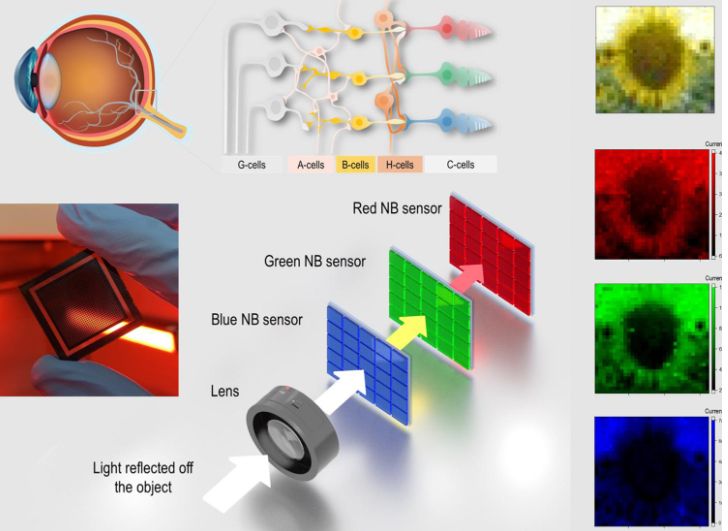
How do you approach the process of designing and synthesizing new materials in your research? What techniques, tools, or methodologies do you employ to develop novel materials with specific properties?
The principle behind our color-distinguishable sensing material finds its roots in our previous research, wherein we discovered that light of different colors is absorbed at varying depths within our light-sensing materials.
To specifically target certain wavelengths of light, we need to electrically isolate the region where this target light is absorbed, free from the interference of other light wavelengths. One such strategy involves adjusting the material’s features, such as its ability to facilitate the transfer of holes and electrons.
Accordingly, we designed our material with distinct electronic band structures by manipulating the configurations of the crystal lattice. Modifying these features requires us to alter the composition, stoichiometric ratios, and employ various chemical and physical methods.
The magic in our approach lies in the understanding and exploitation of these finely tuned properties. The complexity of tuning these properties demonstrates the intricate nature of materials science and is what makes our work both challenging and rewarding. By making these adjustments, we’re not just changing the material; we’re fundamentally redesigning how it interacts with light. This, in essence, is the heart of our color-distinguishable sensing material design.
Are there any emerging trends or cutting-edge technologies in materials science that you believe will have a significant impact in the near future?
Over the last decade, I’ve observed the rise of halide perovskite materials, which have demonstrated impressive performance in photovoltaics. However, they have often fallen short in terms of stability.
As a materials scientist, I believe that the perovskite-type lattice framework has the potential to open new opportunities for materials that excel in both efficiency and stability. Furthermore, I believe these materials hold promise for a range of applications beyond just photovoltaics.
For instance, the unique ionic motion feature in these materials has shown potential in the realms of memristors and artificial synapses. Research is also underway to explore other properties of these materials, including their potential use in ferroelectrics, thermoelectrics, magnetoelectric effects, high-energy X-ray sensing, LEDs, and more.
I’m particularly excited about the possibilities of exploring a wider range of applications for these materials beyond solar cells, as it has the potential to lead to groundbreaking discoveries in the future. This broader exploration, I believe, can bring renewed significance to the study and application of halide perovskite materials.

How could Artificial Intelligence affect the area of Materials science?
AI is rapidly infiltrating the field of materials science, proving to be a transformative force. For instance, AI is instrumental in material mining, where it’s used to filter out non-existing compositions, which helps in identifying promising new materials.
Additionally, AI algorithms can streamline the synthetic and manufacturing processes, paving the way for greater efficiency and scalability in materials production. AI is also vital in optimizing processing techniques by unveiling hidden patterns from large datasets, thereby leading to more efficient and optimized processes. It also greatly enhances the analysis of complex materials data, leading to more accurate predictions and better understanding of material behaviors.
As a tool, AI holds immense potential to revolutionize future materials science research. The challenge for us as materials scientists, I believe, lies in innovating new ways to harness AI in solving our field’s most pressing problems. This includes integrating AI more effectively into our workflows, using it to drive forward the discovery and design of new materials, and applying it to improve manufacturing processes.
What do you love most about Penn State?
One of the aspects I genuinely appreciate is the tranquillity of State College’s Happy Valley. Our campus, enveloped by mountains, cultivates a serene environment conducive for research. It’s a place where intellectual curiosity thrives amid nature’s calm.
Additionally, I am particularly fond of the shared facilities at the Materials Science and Engineering department in Penn State. The support and assistance we receive from the dedicated staff on a wide range of research topics significantly enhance our work. Their commitment and expertise make them an invaluable part of our academic community.
What are your other interests besides materials … reading, painting, gardening, skiing maybe?
One of my unique hobbies involves simplifying intricate cooking recipes for delicious dishes. There are foods I adore which require elaborate preparation, multiple steps, and considerable time. However, given my time constraints, I have found myself intrigued by the challenge of resolving this paradox.
I set out to streamline these complex recipes by efficiently organizing the necessary steps, merging some, and even eliminating others when feasible. This task, at times, may feel as demanding as conducting research, but it is a culinary puzzle that I thoroughly enjoy solving.
Someone comes up to you and says, “I wanna be just like you. I want to be a Materials Scientist”, what advice would you give?
Firstly, it’s wonderful to hear about someone’s interest in pursuing a career in materials science. My principal advice would be to carve out your own niche within this broad and exciting field. Creating your own path in a new area of research not only fuels your passion and curiosity but also ensures novelty in your work, which can sustain your interest over time.
Moreover, establishing yourself in a unique subfield makes you an invaluable member of the research community. Your distinct contribution and perspective can shape the evolution of the discipline and lead to breakthroughs that might otherwise remain undiscovered.
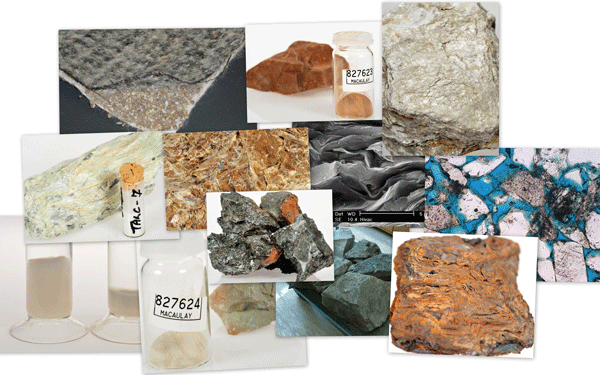
Quick bits:
What is your favourite movie quote?
The quote I hold dear isn’t from a movie, but from the ancient Chinese philosopher Zhuangzi, renowned for his profound and thought-provoking parable of the butterfly dream. He wrote,
“I dreamed I was a butterfly, flitting around in the sky; then I awoke. Now I wonder: Am I a man who dreamt of being a butterfly, or am I a butterfly dreaming that I am a man?”
The first time I encountered this narrative, it expanded my perspective, prompting me to view reality and self-perception in a new light. Later, when I came across concepts like “Brain in a vat” and watched movies like The Matrix, I was struck by the enduring relevance and timeless profundity of Zhuangzi’s thoughts, which could continue to inspire and challenge, even after thousands of years.
If you were a superhero what would your powers be?
Omniscience, I guess, the power to “know everything”.
Then, I can find a solution to all the other superheroes 🙂
Your favourite scientific innovation of the 21st century?
Perhaps my favorite scientific innovation of the 21st century is “Artificial Intelligence and Machine Learning.”
These technologies are fundamentally altering the fabric of our modern society, a straightforward example being the OpenAI chat model. As we advance towards even more sophisticated computational techniques, such as quantum computing, AI and Machine Learning are set to radically disrupt the status quo even more.
As a researcher, I’m fascinated by the potential for unknown chemical reactions to create novel materials or substances. However, I also harbor concerns about the potential for uncontrolled results, which could lead to an explosion, a technical singularity, or even a catastrophe for humanity.
What will your TED Talk be 10 years from now?
Ten years from now, I envision researches focused on the convergence of biomimicry and the evolution of artificial systems. I aim to present ground-breaking research that not only enhances our understanding of natural biological systems through new discoveries, but also propels the development of advanced methods for sensing and diagnosing these systems with unparalleled accuracy and discernibility.
The ultimate goal is to foster an environment where technology complements and elevates our understanding of the natural world, driving both scientific and societal progress.
What books should I read in 2023?
In 2023, the selection of books to read can vary greatly depending on reading objective. However, here are a few of my recommendations that span diverse genres and purposes:
For expanding your scientific understanding, I highly recommend “Scale: The Universal Laws of Growth, Innovation, Sustainability, and the Pace of Life in Organisms, Cities, Economies, and Companies” by Geoffrey West. This book presents a scientific adventure story revealing the fundamental natural laws that bind us together in astonishingly simple, yet profound ways.
If you’re interested in philosophical insights which, in my opinion, play a significant role in research, consider “The Art of War” by Sun Tzu. This ancient Chinese military treatise from roughly the 5th century BC offers deep wisdom. Despite being a military strategy book at its core, its fundamental message is one of “peace”. It provides numerous philosophical insights and practical tips for both competition and unification.
For leisurely reading or if you’re into science fiction, “The Three-Body Problem” by Liu Cixin could be an excellent choice. I appreciate this book for its unique perspective on civilization, which stands in contrast to the legendary “Foundation Series” by Isaac Asimov. The story in “The Three-Body Problem” is infused with an array of oriental elements that add a distinct cultural flavor to the narrative.

Wow! I have added the books in my ‘to-read list’. Thank you, Dr. Wang, it has been a real pleasure! Your work is truly an inspiration. We look forward to visit you again and see more of your innovative research. Till then, we wish you all the very best for your future endeavor.

